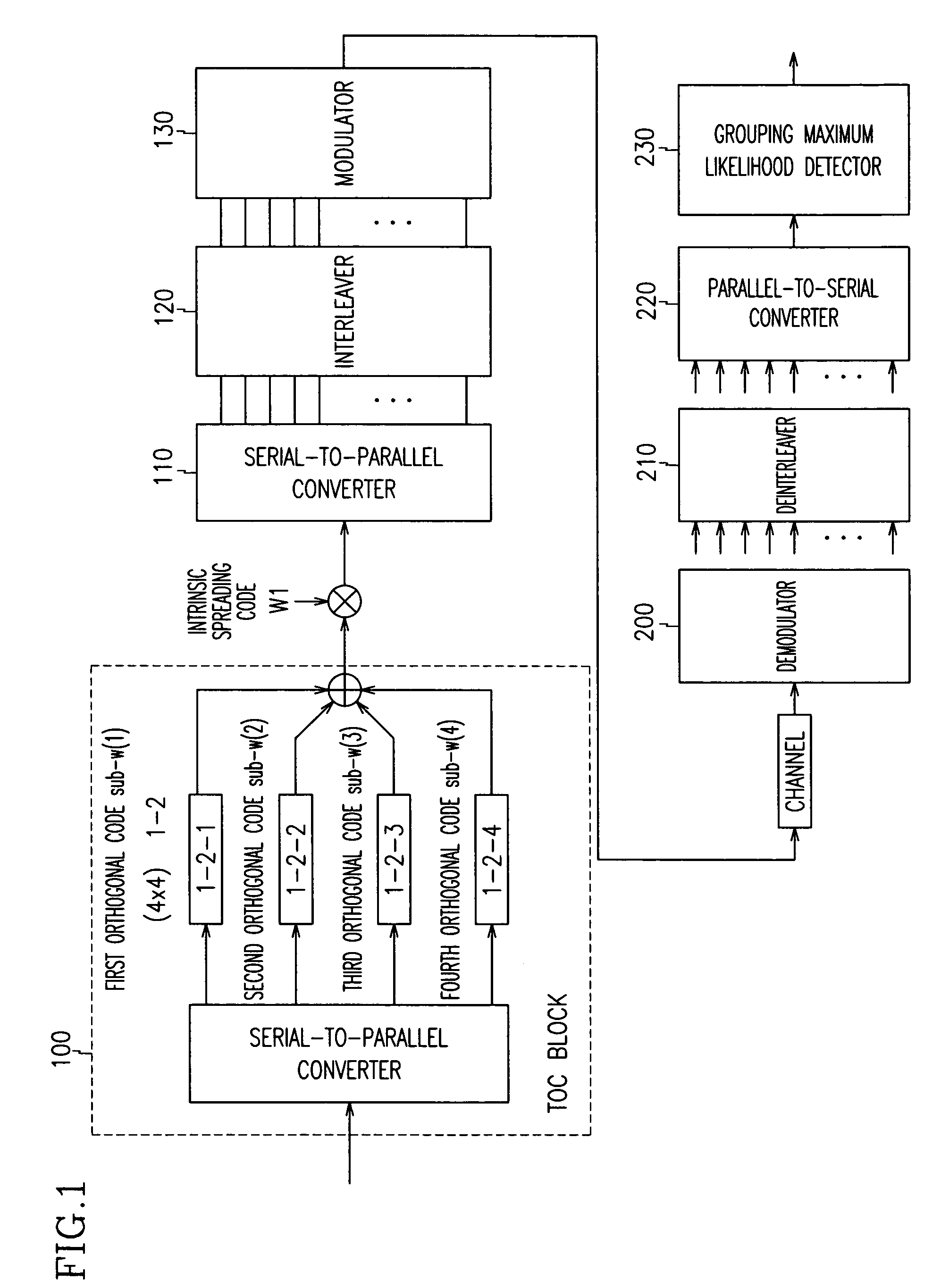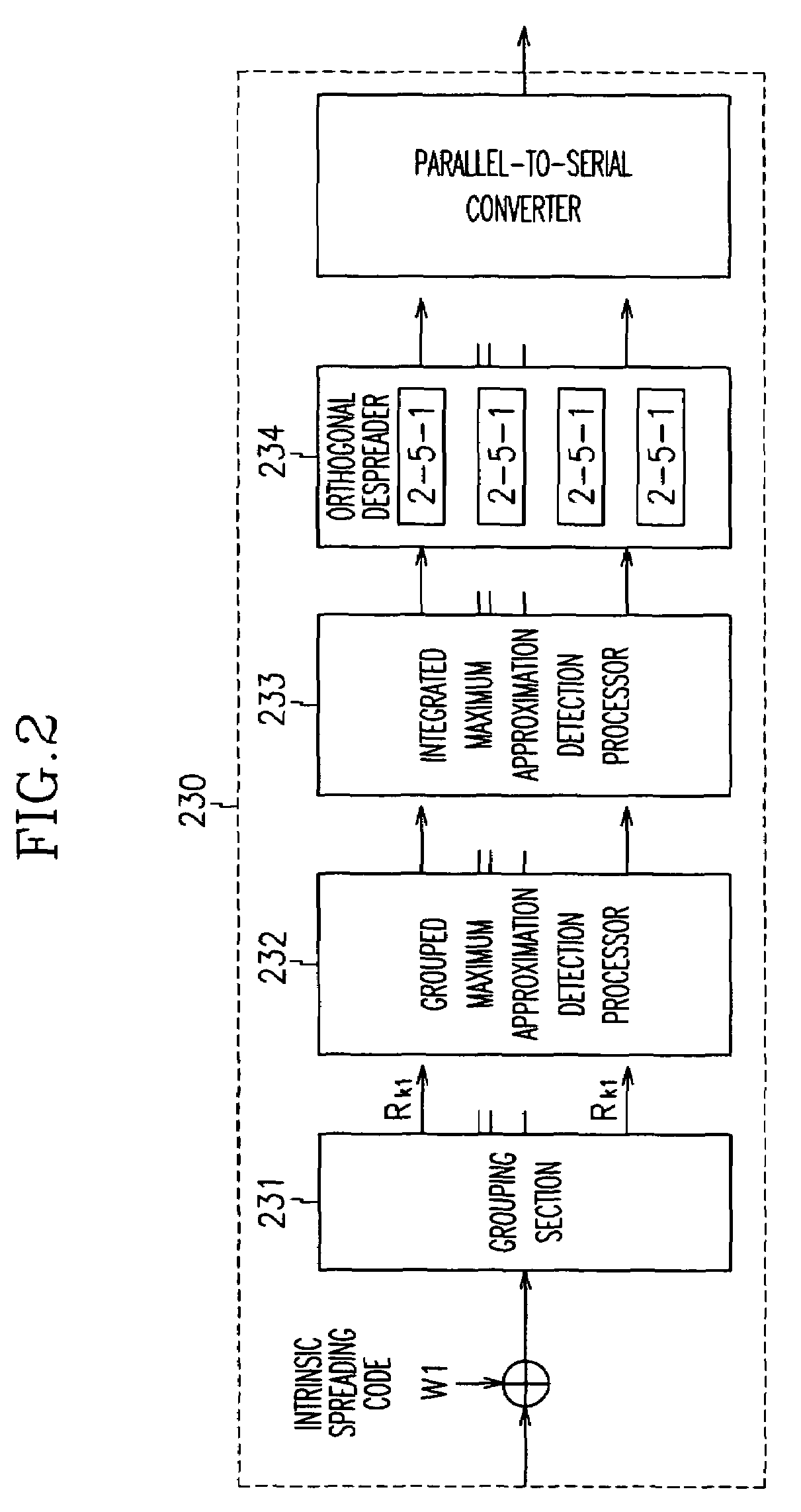Wireless communication system and method using grouping maximum likelihood detection
a wireless communication system and probability detection technology, applied in the field of maximum likelihood detection, can solve the problems of reducing redundancy of noise, reducing the probability of detection, and qam method is susceptible to distortion, so as to reduce the complexity of calculation, improve performance, and reduce the complexity of system implementation
- Summary
- Abstract
- Description
- Claims
- Application Information
AI Technical Summary
Benefits of technology
Problems solved by technology
Method used
Image
Examples
Embodiment Construction
[0018]In the following detailed description, only the preferred embodiment of the invention has been shown and described, simply by way of illustration of the best mode contemplated by the inventor(s) of carrying out the invention. As will be realized, the invention is capable of modification in various obvious respects, all without departing from the invention. Accordingly, the drawings and description are to be regarded as illustrative in nature, and not restrictive.
[0019]For an evident description of the present invention, the parts not related to the description are omitted in the illustrations. The same reference numerals are assigned to the same parts all through the specification.
[0020]Hereinafter, the embodiment of the present invention will be described in detail with reference to the accompanying drawings.
[0021]FIG. 1 is a block diagram of a wireless communication system according to the embodiment of the present invention.
[0022]The wireless communication system according ...
PUM
 Login to View More
Login to View More Abstract
Description
Claims
Application Information
 Login to View More
Login to View More - R&D
- Intellectual Property
- Life Sciences
- Materials
- Tech Scout
- Unparalleled Data Quality
- Higher Quality Content
- 60% Fewer Hallucinations
Browse by: Latest US Patents, China's latest patents, Technical Efficacy Thesaurus, Application Domain, Technology Topic, Popular Technical Reports.
© 2025 PatSnap. All rights reserved.Legal|Privacy policy|Modern Slavery Act Transparency Statement|Sitemap|About US| Contact US: help@patsnap.com



